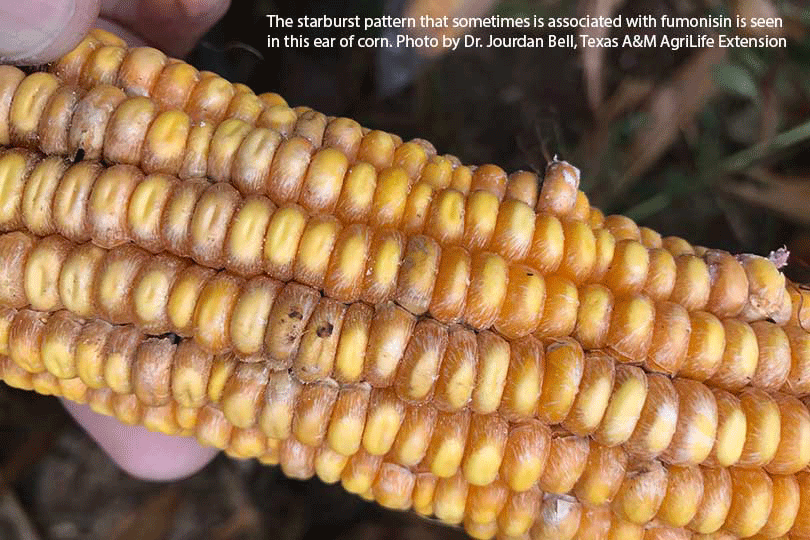By Jessica Domel
Multimedia Reporter
The 2017 corn harvest may still linger in the rear view mirror for some, but Panhandle-area corn farmers are already being encouraged to talk to their seed sales representative and crop insurance agent to mitigate the risk of fumonisin in 2018.
Although the amount of naturally-occurring mycotoxin in the soil is entirely dependent on the weather, researchers say there are things farmers can do to try to protect their crop.
“I’d encourage them to select the hybrids that get a closed husk and have some of the newer BT (biotechnology) traits. That seems to be a big factor,” David Gibson, executive director for Texas Corn Producers, said in an interview with the Texas Farm Bureau Radio Network. “They need to look at planting population versus whether it’s dryland or irrigated and not over plant what you can potentially take care of to have good, healthy plants.”
Selecting varieties of corn with a closed husk could prevent fumonisin spores from entering the ear.
“Any time we had open husks or we had some type of (earworm or army worm) damage that had opened up and let external factors in, that’s when we saw more of (fumonisin),” Gibson said. “Preventing all of that is probably key.”
Strip-tilling and/or burning fields that had fumonisin in 2017 isn’t likely to have an impact on whether the toxin will return in the next crop.
“Fumonisin is present in all soils across the United States,” Gibson said. “So, we get some sporulation when the wind carries the spores later in the year. They don’t see, right now, that there’s a big benefit to cultivating it.”
A hot, dry July and wet August in the Texas Panhandle and Oklahoma led to higher rates of ear molds and fumonisin, which cannot be detected visually in many instances.
The presence of the mycotoxin resulted in price cuts for many corn growers, because high levels of fumonisin can be toxic to livestock and humans.
“The biggest impact it had was a lot of extra stress,” Gibson said. “In some cases, there were some pretty good discounts issued by some of the buyers—especially if they had some of the very high levels, in the hundred parts per million range or a little bit above. That’s just a harder product to blend in and get brought back down to the level that can go into the cattle feeding industry.”
Many growers had to file insurance loss claims due to fumonisin.
“Special provisions were written. That’s now prompted some changes for the upcoming year. They’ve now got some decent insurance coverage. They hadn’t expected much, but it turned out better than they expected so that really helped in the end,” Gibson said.
The discount schedule for fumonisin and aflatoxin, a related mycotoxin, claims will most likely appear in growers’ crop insurance policies for 2018.
Gibson encourages farmers to keep good records in case they need to submit them to the U.S. Department of Agriculture Risk Management Agency.
But whether growers will see another year with high levels of fumonisin is entirely up to Mother Nature.
“Whether we repeat the environmental factors to go with the potential (fumonisin) problems for another year, that’s still up in the air. We won’t know until it occurs,” Gibson said.
Forecasts are calling for a drier season in 2018, which could prevent another crop year like 2017 for Panhandle corn growers.
“Farmers have, in general, more concern and more awareness,” Gibson said. “I certainly expect to see definite plans and implementation looking at the variety differences, getting the (plant) stand established and having a good, healthy plant going into when we might see that type of weather.”
Texas A&M AgriLife entomologists continue to research fumonisin to determine what actions and biotechnology traits could help minimize future outbreaks.
Texas Corn Producers will continue to update corn growers on the research and additional information as it becomes available at

